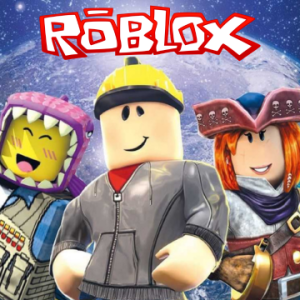Features Review
Stepping into the World of R.E.P.O.
From the moment I first fired up R.E.P.O., I felt as if I had stepped into an entirely new realm. The game immediately captivated me with its futuristic yet mysterious setting, combining elements of cyberpunk aesthetics with an undercurrent of gritty realism. I was drawn into its immersive universe, where every detail seemed meticulously designed to challenge my perceptions of interactive storytelling. The initial load screen felt like an invitation into a world that was at once bizarre and familiar, where my actions had a palpable impact on the unfolding narrative.
Immersive Narrative Layers
What struck me most about R.E.P.O. was the complexity of its narrative structure. As I navigated through its various chapters, I discovered that the story was far more layered than a conventional linear plot. The narrative unfolds through multiple perspectives, each revealing hidden facets of the game’s universe. I found myself piecing together snippets of lore scattered throughout different levels, documents, and interactions. Every dialogue exchange and environmental cue felt deliberately crafted to peel back another layer of its enigmatic world. This depth encouraged me to think critically about every decision I made, knowing that even minor choices might ripple into significant changes within the overall story arc.
Innovative Gameplay Dynamics
One of the primary attractions of R.E.P.O. lies in its innovative gameplay mechanics. The game challenges traditional modes of interaction by introducing a system that seamlessly blends action with strategy. The mechanics are built around a dynamic decision tree that adapts to my in-game choices, creating a unique experience for every playthrough. I was particularly impressed by how the game's mechanics allowed for spontaneous creativity, enabling me to approach challenges in a multitude of ways. The non-linear progression made it clear that there was no single correct path; instead, the game was designed to reward both exploration and experimentation.
Artistry and Visual Composition
The visual landscape in R.E.P.O. is a feast for the eyes. I wandered through neon-lit, futuristic cityscapes intermingled with desolate, abandoned areas that spoke of a forgotten past. The artistic style is a clever fusion of digital art and traditional design, inviting me to appreciate both the polish of modern graphics and the charm of hand-crafted details. Every environment was rich in texture and nuance, from the subtle glimmer of rain-soaked pavements to the intricate details of cyber augmentations worn by in-game characters. I often found myself pausing just to admire the level of dedication that went into each frame, marveling at the beautiful juxtaposition of chaos and calm.
Auditory Experience and Sound Design
The soundscape of R.E.P.O. is an element that significantly enhanced my overall engagement with the game. The audio design complements the visual aesthetics perfectly, weaving a tapestry of immersive sounds that evoke both tension and curiosity. I was particularly moved by the atmospheric background music that adjusted in intensity with the game’s shifting moods. Ambient noises, from the soft hum of futuristic machinery to distant echoes of unrest, resonated with me on a personal level, adding a layer of emotional depth to every scene. The voice acting, too, contributed substantially, giving life to the characters in ways that made every conversation feel crucial.
Technical Flourish and Fluid Interface
The technical performance of R.E.P.O. is nothing short of impressive. My journey through the game was nearly seamless, thanks to a user interface that was both intuitive and responsive. Every menu option, every interactive element, was designed with precision and care. The fluidity with which I could navigate complex systems within the game served to minimize any disruptions in my immersion. I found that even during moments of fast-paced action, the interface adapted smoothly, offering essential information without overwhelming or distracting me from the core gameplay. It is rare to see such a well-integrated backend that advances the story while keeping user interactions clear and concise.
Exploration of In-game Universes
R.E.P.O. offers a diverse array of realms to explore, each brimming with its own unique atmosphere and challenges. I vividly recall venturing into sprawling urban sprawls, each district reflecting distinctive cultural and technological influences. Some areas exuded a sense of order and progress, while others lay in ruins, hinting at past conflicts and revolutions. The environmental storytelling was meticulously interwoven into every location, compelling me to search for small details—a graffiti scrawl here, a misplaced artifact there—that ultimately deepened my connection to the game. This variety ensured that no two explorations felt alike, making every journey through the world of R.E.P.O. a fresh adventure.
Interactive Character Dynamics
Interpersonal engagements within R.E.P.O. provided some of the most rewarding moments of my experience. The characters are designed with an almost overwhelming authenticity, each with their own backstory, motives, and evolving relationships. I interacted with figures who were both allies and adversaries, learning about their lives in snippets of dialogue and subtle actions rather than overt exposition. These interactions proved to be a fascinating study in human behavior, reflecting a world where personal ambitions, moral ambiguities, and past regrets played out in real time. I found myself increasingly invested in the fates of those around me, and each character interaction was a lesson in the delicate balance between trust and caution in a world rife with uncertainty.
Progression and Reward Systems
The progression system in R.E.P.O. is crafted with a precision that rewards exploration and persistence. I was constantly motivated to dive deeper into side quests, collect intricate tokens hidden throughout vast environments, and complete challenging puzzles that opened up new segments of the narrative. Rather than simply levelling up, I acquired skills that could be tailored to my preferred style of play. The rewards were not only practical, in terms of gameplay enhancements, but often unlocked additional narrative threads that enriched my understanding of the game’s lore. Each achievement felt earnestly deserved, and the sense of accomplishment was a constant reminder of the game designers’ commitment to balanced and thoughtful progression.
Community and Social Integration
Though R.E.P.O. stands predominantly as a single-player experience, its integration of community elements is both innovative and engaging. I had the opportunity to participate in events that connected my journey with those of other players, even if they were not directly involved in my immediate storyline. These shared experiences created an ambient social space where strategies, theories, and creative plays were exchanged freely. At times, I even joined virtual gatherings where players dissected puzzles and analyzed hidden clues, broadening my perspective on the intricacies of the overall narrative. The subtle inclusion of social dynamics within a single-player context made me appreciate the layered approach taken by the developers, acknowledging that storytelling can flourish through shared experiences as well as solitary exploration.
Cultivating a Personal Connection with the World
Throughout my time with R.E.P.O., it became increasingly clear that the game was more than just a sequence of challenges—it was an invitation to cultivate a deep, personal connection with its world. I approached the gameplay not only as a series of quests to be completed but also as a chance to reflect on the nature of choice and consequence in interactive media. Whether I found myself stealthily navigating dark alleyways, engaging in thought-provoking dialogues, or observing the subtle interplay of light and shadow in a forgotten corner of the cityscape, every moment was infused with meaning. This personal connection grew stronger with each decision I made, transforming routine gameplay into an exploration of self and narrative within a meticulously crafted universe.
Adaptive Challenges and Skill Development
Another aspect that kept me thoroughly engaged in R.E.P.O. was the game’s system of adaptive challenges. At various stages, I encountered sequences that adjusted in difficulty based on my previous actions and decisions. This design choice required me to continually hone my skills and evolve my strategy. I found that the game pushed me to think outside conventional solutions, urging me to rely on both intuition and learned tactics. These challenges extended beyond combat or physical feats; many situations required a delicate balance of puzzle-solving and social maneuvering, reflecting a comprehensive test of my overall gameplay skills. The satisfaction of overcoming these adaptive hurdles was immense and added a layer of depth that made every victory feel personal and triumphantly hard-earned.
Dynamic World-Building and Environmental Storytelling
One of the truly standout features of R.E.P.O. is its approach to environmental storytelling. Every location, no matter how insignificant it initially appeared, played a role in the broader narrative tapestry. As I moved through environments, I uncovered clues about the history of the locations, their prior inhabitants, and the events that had shaped them. Old murals, broken technology, and abandoned personal belongings all combined to tell stories of hope, despair, and the unyielding drive to survive in a changing world. I found that these narrative details were not merely aesthetic add-ons but formed integral parts of the game’s world-building, inviting me to engage in a dialogue with the setting itself. The experience of piecing together these environmental narratives felt akin to uncovering hidden chapters of an epic saga.
Subtle Integration of Puzzle Mechanics
R.E.P.O. also surprised me with its careful integration of puzzles that served both as engaging brain teasers and as keys to deeper narrative insights. The puzzles were woven into the fabric of the game’s universe, challenging my logical reasoning without interrupting the flow of the adventure. I particularly appreciated puzzles that required me to interact with the environment in inventive ways, using both traditional logic and unconventional thinking. The balance between difficulty and accessibility was precisely tuned, ensuring that even moments of mental exertion were enjoyable rather than overly frustrating. Each solved puzzle rewarded me with a sense of progress, not only in gameplay terms but also in understanding the broader narrative and symbolic motifs that the game embraced.
Immersive World Exploration and Lateral Thinking
As I delved deeper into R.E.P.O., I found that the game continuously encouraged lateral thinking—a challenge to view problems from multiple angles. This approach to world exploration meant that I was never confined to a single method of engagement. Instead, the game presented opportunities to explore alternative routes, experiment with different problem-solving approaches, and discover hidden elements that would otherwise remain unnoticed. I cherished this freedom of exploration, as it organically aligned with the overall message of the game: that the path to understanding is seldom linear. Whether analyzing cryptic inscriptions on ancient walls or deciphering coded messages scattered throughout the environment, I was constantly encouraged to innovate and reassess my strategies, adding layers of intellectual challenge to the inherently immersive experience.
Integration of Dynamic Weather and Day-Night Cycles
The dynamic weather and day-night cycles in R.E.P.O. further enhanced my sense of immersion. I found that the shifts in lighting and environmental conditions not only altered the visual splendor of the game world but also influenced gameplay mechanics in surprising ways. For instance, certain challenges became more daunting under the cover of darkness, while others revealed their secrets under the bright glare of day. I experienced how a seemingly ordinary day could suddenly transform into an eerie twilight setting, heightening my awareness of every sound and shadow around me. This seamless integration of natural cycles with interactive elements underscored the developers' commitment to creating a living, breathing environment where each element contributed to a harmonious, yet unpredictable, interplay between context and gameplay.























